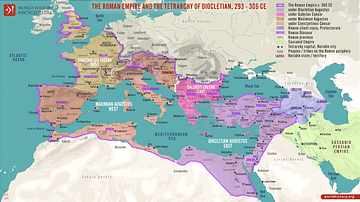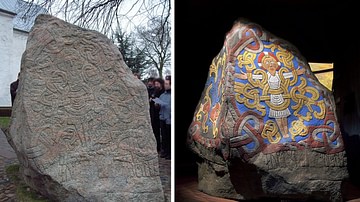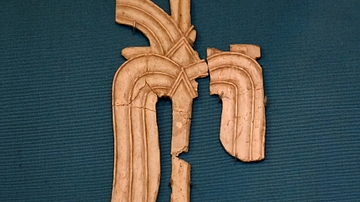Illustration
A map illustrating the geopolitical situation in the Levant after Herod the Great's death (an ambitious ruler appointed as the King of Judea by the Roman Senate in 37 BCE). The Herodian Tetrarchy, established by Herod the Great's will, divided the Levant into four distinct regions, each governed by one of his sons or relatives. This system aimed to maintain stability in the region following Herod's death. During the era of the Herodian Tetrarchy, the Roman Empire increased its territorial presence and influence in the Levant, marking a significant paradigm shift in regional power dynamics, ultimately resulting in the erosion of the Herodian dynasty and imposition of direct Roman rule.
About the Author
External Links
Cite This Work
APA Style
Netchev, S. (2024, March 28). Herodian Tetrarchy in the Levant, c. 5 CE. World History Encyclopedia. Retrieved from https://www.worldhistory.org/image/18751/herodian-tetrarchy-in-the-levant--c-5-ce/
Chicago Style
Netchev, Simeon. "Herodian Tetrarchy in the Levant, c. 5 CE." World History Encyclopedia. Last modified March 28, 2024. https://www.worldhistory.org/image/18751/herodian-tetrarchy-in-the-levant--c-5-ce/.
MLA Style
Netchev, Simeon. "Herodian Tetrarchy in the Levant, c. 5 CE." World History Encyclopedia. World History Encyclopedia, 28 Mar 2024. Web. 14 Apr 2025.








